Shopify vs WordPress: Final verdict
Shopify and WordPress both offer powerful website building solutions, but they cater to different needs and user preferences.
Shopify (Overall Grade: 8.1/10)
excels as a dedicated ecommerce platform, providing a comprehensive set of tools for online store management, including advanced inventory management, multi-channel selling, and detailed analytics. Its user-friendly interface and robust customer support make it an excellent choice for businesses focused on ecommerce. When comparing Shopify vs WordPress, Shopify stands out for its specialized ecommerce features and ease of use, making it ideal for users looking to build and grow an online store.
WordPress (Overall Grade: 7.1/10)
is a versatile open-source content management system that offers extensive customization options through themes and plugins. It is suitable for a wide range of websites, from blogs to business sites and online stores. While it may have a steeper learning curve and require more effort to set up and manage, WordPress provides unparalleled flexibility and creative control. In the Shopify vs WordPress comparison, WordPress is the preferred choice for users who need a highly customizable platform and are comfortable with a more hands-on approach to website management.

|

|
|
|---|---|---|
Design functionalities & templates |
8.2 |
9.0 |
Ease of use |
7.5 |
7.2 |
Ecommerce |
9.2 |
8.4 |
Website Editors |
7.9 |
8.5 |
Product testing options |
8.1 |
8.1 |
Price |
8.2 |
5.9 |
Hosting quality |
9.0 |
0 |
Website speed optimization |
7.8 |
6.5 |
Plugins and integrations |
8.7 |
8.8 |
Marketing features |
8.8 |
8.0 |
Customer support |
8.6 |
5.0 |
Security |
9.0 |
6.7 |
AI capabilities |
7.9 |
6.1 |
User Management |
6.5 |
8.8 |
| Overall | 8.1 |
7.1 |
Which one is the best for ecommerce: Shopify or WordPress?
 9.2
9.2
 8.4
8.4
Verdict
: Shopify is the superior choice for dedicated ecommerce needs, while WordPress offers flexibility through plugins like WooCommerce.
Shopify
: As a dedicated ecommerce platform, Shopify excels with its comprehensive set of features tailored for online businesses. It includes advanced inventory management, multi-channel selling, and detailed analytics, making it a robust choice for ecommerce. When comparing Shopify vs WordPress, Shopify’s built-in ecommerce functionalities and ease of use make it ideal for businesses focused on growth and scalability.
WordPress
: WordPress, with its open-source nature, offers extensive customization options through plugins like WooCommerce. This makes it suitable for users who need flexibility and are comfortable with a bit of technical setup. While it provides multiple payment gateway support and SEO optimization tools, it may require more effort to match Shopify’s out-of-the-box ecommerce capabilities.
Which one is the best for informational and business websites?
 6.8
6.8
 9.2
9.2
Verdict
: WordPress is the superior choice for informational and business websites due to its extensive customization options and flexibility. Shopify, while excellent for ecommerce, is less suited for purely informational sites.
Shopify
: Shopify, scoring 6.8, is primarily designed for ecommerce, offering robust tools for product listing, payments, and order fulfillment. While it can be used for informational sites, its features are more tailored to online stores, making it less ideal for businesses that do not require ecommerce functionalities.
WordPress
: WordPress, with a high score of 9.2, excels in creating and managing informational and business websites. Its open-source nature allows for extensive customization through themes and plugins, making it suitable for a wide range of website types. When comparing Shopify vs WordPress, WordPress stands out for its flexibility and ability to cater to diverse user needs.
Shopify vs WordPress: Detailed comparison
Design functionalities & templates
Design FunctionalitiesRepresents how well each platform allows for creative design and customization of websites.Score Components:
- Template Variety (30%): Range and quality of design templates.
- Customization (30%): Flexibility and options for design alterations.
- User Interface (20%): Ease and intuitiveness of the design process.
- Responsiveness (10%): Adaptability to different devices and screen sizes.
- Innovation (10%): Unique design features and tools.
 8.2
8.2
 9.0
9.0
🏆
Winner: WordPress.
If you’re looking for a platform that offers more creative control, a wider array of design features, and a larger selection of free and premium templates, WordPress is the preferred choice.
Shopify’s templates are sleek and professional, ideal for ecommerce sites. They offer a sophisticated look with a focus on online stores. While the free template selection is not large, Shopify’s premium theme store provides a variety of industry-specific options, offering advanced features for a strong brand presence.
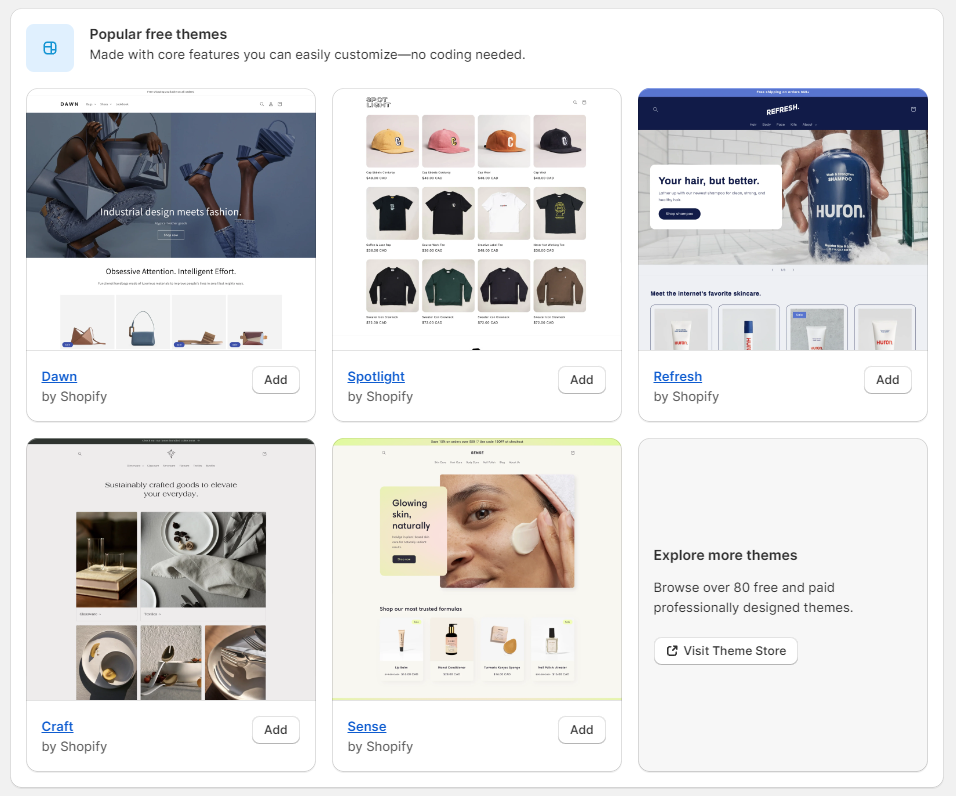

Compared to Shopify, WordPress offers an extensive variety of templates and designs, catering to a wide range of website types beyond just blogs or ecommerce. Its open-source nature allows for high customization and creative freedom, appealing to diverse user needs. While WordPress itself doesn’t sell premium templates, numerous third-party theme shops offer sophisticated and specialized design choices, expanding the possibilities for users.
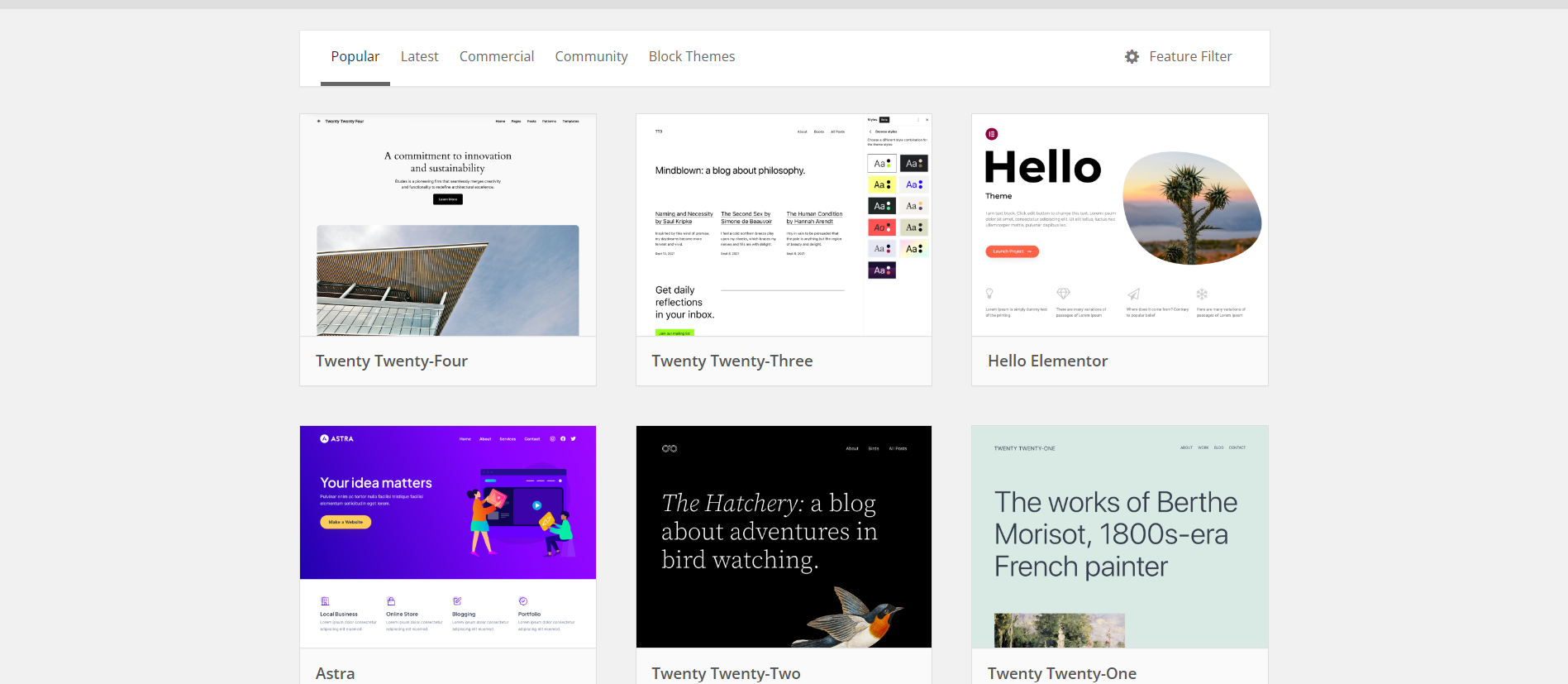

Get a head start on website creation with AI
Create a custom website tailored to your business needs 10X faster with 10Web AI Website Builder!
Ease of use
Ease of useReflects the platform’s overall user-friendliness.Score
Components:
- Learning curve (40%): Quickness and ease of getting started.
- Interface design (30%): Simplicity and intuitiveness of layout.
- User guidance (20%): Quality of tutorials and support.
- Flexibility (10%): Adaptability to various user skills.
 7.5
7.5
 7.2
7.2
🏆 Winner: Shopify
. Scoring 7.5, Shopify is generally easier to use than WordPress, which scores 7.2. Shopify’s user-friendly design and comprehensive support make online store management accessible for all, especially for small businesses and product-based enterprises. On the other hand, WordPress offers great flexibility and power, but it can be less intuitive for beginners. However, its extensive customization options and advanced control over website design and functionality make it suitable for users who desire full control over their website’s design and functionality.
Learning Resources
🏆 Winner: WordPress
. Both platforms offer solid learning resources, but WordPress stands out with its vast array of learning resources, known for both their availability and quality. These include detailed documentation, community forums, online tutorials, and courses offered by both WordPress and third-party providers. This extensive support network is beneficial for users of all skill levels, from beginners learning the basics to advanced users seeking to enhance their expertise.
For ecommerce
EcommerceMeasures the platform’s effectiveness in supporting online business activities.Score Components:
- Ecommerce themes and templates (20%): Variety and design of templates.
- Product management (25%): Ease of managing and organizing products.
- Payment options (25%): Variety and convenience of payment methods.
- Ecommerce features (20%): Features for managing an ecommerce store.
- Integration (10%): Compatibility with external e-commerce tools and services.
 9.2
9.2
 8.4
8.4
Shopify, a dedicated ecommerce platform, scores higher than WordPress in the ecommerce sector. Shopify’s comprehensive set of features for online businesses, including advanced inventory management, multi-channel selling, and detailed analytics, make it a robust choice for ecommerce. On the other hand, WordPress, an open-source content management system, can be extended for ecommerce through plugins like WooCommerce, offering features like multiple payment gateway support, abandoned cart recovery, and SEO optimization tools.
 |
 |
|
|---|---|---|
Ecommerce themes and templates |
8.2 |
9.2 |
Product page customization |
8.5 |
9.0 |
Payment processing and commissions |
8.8 |
7.5 |
POS capabilities |
8.1 |
6.5 |
Payment gateways |
9.5 |
8.5 |
Product numbers |
9.0 |
7.0 |
Additional ecommerce features |
9.1 |
8.0 |
Shopify ecommerce features:
- Comprehensive store builder
- Shopify Payments and other gateways
- Advanced inventory management
- Multi-channel selling
- Abandoned cart recovery
- Detailed analytics and reporting
WordPress ecommerce features:
- WooCommerce Integration
- Multiple Payment Gateway Support
- Abandoned Cart Recovery
- Ecommerce Analytics
- SEO Optimization Tools
- Extensive Plugin Ecosystem
Ecommerce themes & templates
Shopify offers about 150 modern responsive themes for creating a virtual storefront, ensuring a good look on both desktop and mobile devices. While some themes are free, others cost between $170 to $380. In contrast, WordPress provides hundreds to potentially thousands of ecommerce and WooCommerce specific themes and templates, both free and premium.
Product page customization
Shopify allows three options per product, totaling 100 unique variations. While Shopify offers titles, descriptions, and image galleries with zoom effects, customization options like adding ribbons, size charts, and wishlists are not as straightforward. However, Shopify distinguishes itself with additional features through its extensive library of extra apps, offering functionalities like reviews, Facebook stores, eBay item importers, and a unique Augmented Reality feature for an enhanced customer experience.
On the other hand, WooCommerce on WordPress offers extensive customization for eCommerce product pages, balancing plugins, page builders, and custom coding. Advanced features like product tabs, upsells, and related products are customizable. Tools like Elementor and the Ultimate Product Catalog plugin enhance functionality, but heavy plugin use may affect site performance.
Payment processing
Shopify offers payments with typical charges of
2.9% + 30¢
per online transaction on basic plans, and lower fees for higher-tier plans. However, it adds extra fees for using other payment gateways. Shopify Payments is Shopify’s own payment processing gateway. It allows merchants to accept credit card payments directly on their store without having to integrate third-party payment providers. This simplifies the payment process, reduces transaction fees, and streamlines the handling of finances.
WordPress doesn’t handle payments directly but offers plugin options for payment processing. Popular gateways include PayPal, Stripe, Authorize.Net, and Square. Choose a gateway based on transaction volume, currencies, fees, and security. Plugins integrate gateways with WooCommerce for a user-friendly setup. Consider options for recurring payments, offline payments, and fraud prevention. Research, read reviews, and start small, scaling as needed.
Website Editors
Website EditorsEvaluates the platforms’ website building and editing capabilities.Score Components:
- Customization tools (40%): Range and power of editing features.
- Editor usability (30%): User experience within the editor.
- Design flexibility (20%): Freedom in layout and design changes.
- Update and maintenance ease (10%): Simplicity of updating and maintaining the site.
 7.9
7.9
 8.5
8.5
🏆
Winner: WordPress
. WordPress, with a score of 8.5, offers a user-friendly interface with block-based editing, extensive styles customization, template management, page editing/creation, distraction-free modes, versatile saving options, and accessibility for users of varying skill levels. It also provides a wide range of blocks and widgets for creating websites, including free blocks like Core Blocks, Design Blocks, Media Blocks, and Widgets, as well as premium blocks available through third-party plugins.
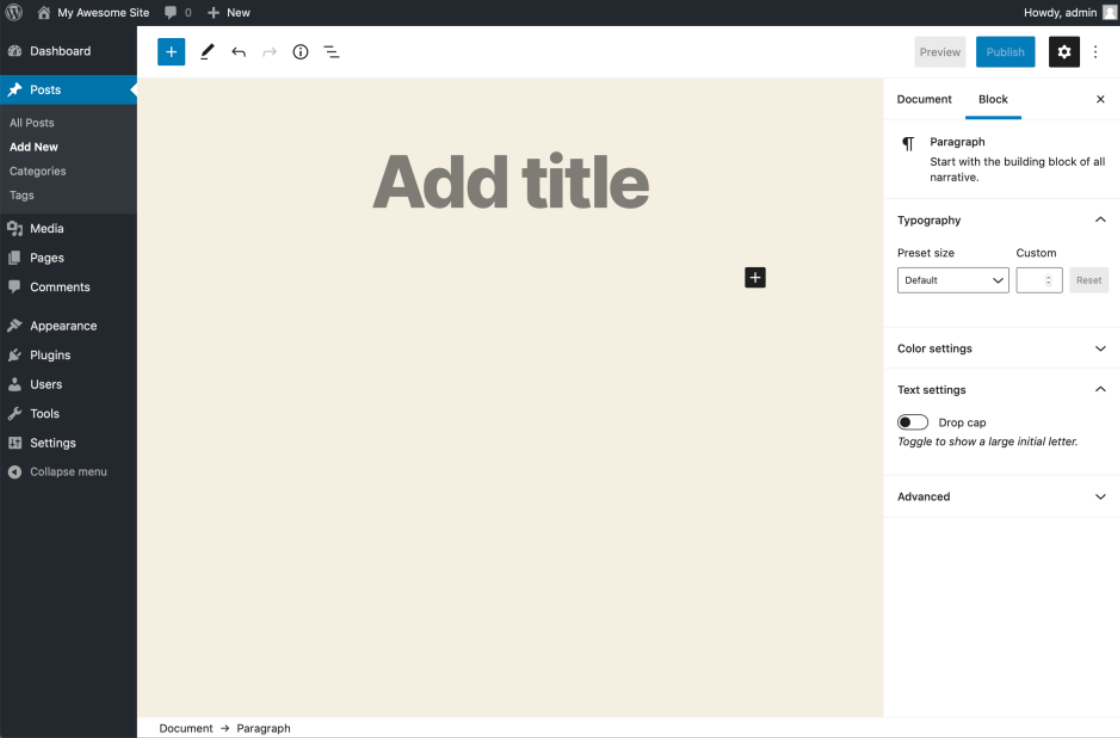
Shopify’s editor, scoring 7.9, excels in providing a streamlined, ecommerce-focused editing experience. It’s particularly beneficial for users who prioritize efficient management of online stores. The editor is straightforward, making it easy to add products, manage inventory, and set up payment methods. While it may not offer the same level of design flexibility as WordPress, Shopify’s editor is optimized for sales and business growth, with built-in tools specifically designed for ecommerce businesses.
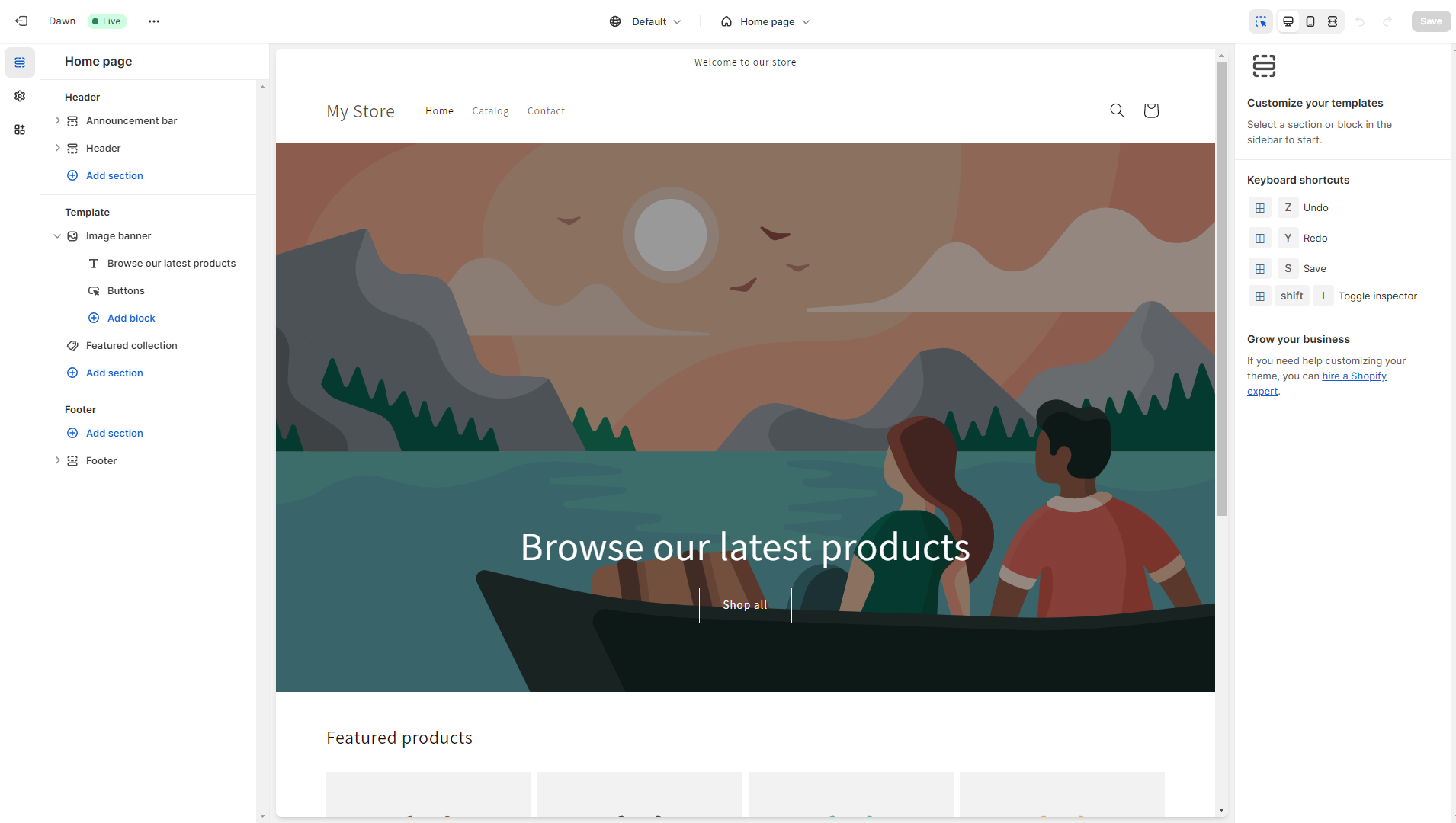
Mobile editor/app
 8.0
8.0
 8.1
8.1
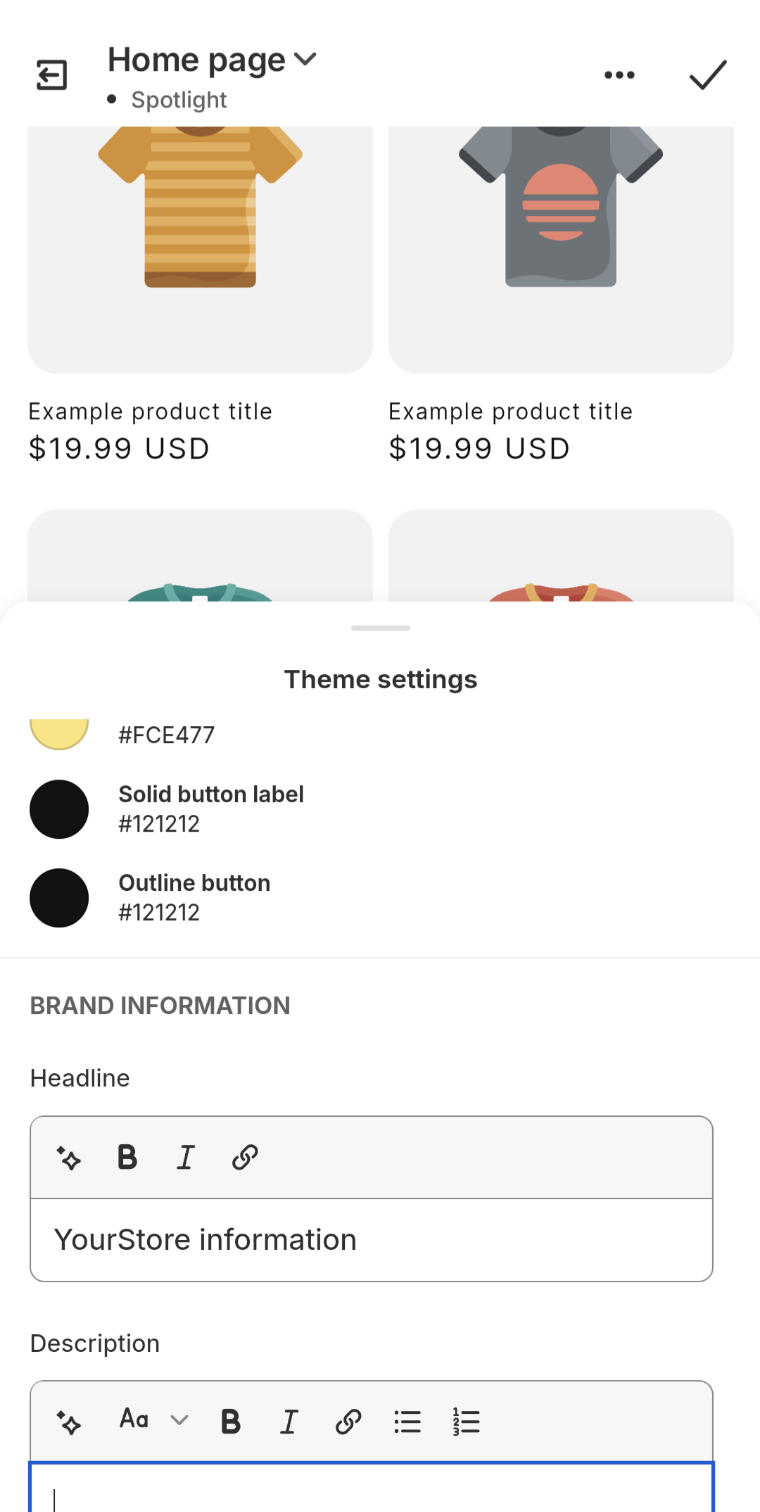
🏆
Winner: WordPress
. Both Shopify and WordPress offer mobile apps for managing your website, but they cater to different needs and skill levels. Shopify focuses primarily on ecommerce management through its mobile app, offering robust features for product management, order processing, inventory tracking, and sales reporting. However, it may be overwhelming for beginners due to its emphasis on ecommerce features.
WordPress, on the other hand, allows you to manage your website on the go. You can create and edit posts, manage comments, schedule content, and analyze website traffic from your phone or tablet. While it offers convenience and basic functionality, it has some limitations compared to the web-based editor, including fewer advanced options, restricted code access, and limited design customization.
In summary, WordPress receives a slightly higher rating due to its versatility in general website editing and a more beginner-friendly interface, while Shopify is strong in ecommerce management but may be better suited for users with some experience.
Product testing options
Product Testing OptionsAssesses the options for trying out platform features before commitment.Score Components:
- Trial quality (40%): Extent and usefulness of the trial or free version.
- Feature accessibility (30%): How many features are available to test.
- Trial duration (20%): Length of the trial period.
- Ease of transition (10%): Smoothness of moving from trial to paid plans.
 8.1
8.1
 8.1
8.1
Overall Result
:
Shopify wins
. Shopify scores 8.1, offering a 14-day free trial with access to all features, while WordPress, also scoring 8.1, does not offer a trial version or the possibility to test premium features. However, WordPress is an open-source CMS and is free to use.
 |
 |
|
|---|---|---|
Free Plan |
No (14-day free trial) | Yes (open source software) |
Trial Duration |
14 days | No |
Testing Premium Features |
All features during free trial |
No |
Price
PriceLooks at the cost-effectiveness and value for money of each platform.Score Components:
- Plan value (40%): What each pricing tier offers.
- Transparency and clarity (30%): Clearness of pricing structures.
- Flexibility of plans (20%): Range of options to suit different budgets.
- Hidden costs (10%): Additional expenses not included in the plan.
 8.2
8.2
 5.9
5.9
Shopify offers a range of pricing plans, while WordPress is free but requires separate purchases for domain, hosting, and website builder subscriptions.

|

|
|
|---|---|---|
Free |
No offering at this amount. |
Free Plan ($0/month): WordPress is open source software that is free. WordPress does not provide hosting services; so, it is necessary to purchase a domain, web hosting, and website builder subscriptions separately. While WordPress lacks built-in ecommerce, plugins like WooCommerce offer a solution. WordPress offers an extensive variety of templates and designs. WordPress lacks a built-in AI-assisted builder, but its open-source nature allows for an ecosystem of plugins and themes incorporating AI for website building. |
$20-$30 |
Shopify Basic ($29/month): Unlimited products, 2.9% + 30¢ card fee with Shopify payments, Extra 2% gateway fee without Shopify Payments, Abandoned cart recovery, Automated sales tax, Digital products, POS Integration, 2 staff accounts. Value for price: 8.0 |
No offering at this amount. |
$70-$80 |
Shopify Standard ($79/month): Lower card fees (2.6% + 30¢), Gift cards, Professional reports, 5 staff accounts. Value for price: 8.5 |
No offering at this amount. |
$200+ |
Advanced Shopify ($299/month): Lowest card fees (2.49% + 30¢), Advanced report builder, Real-time carrier shipping, Up to 15 staff accounts Value for price: 8.8 |
No offering at this amount. |
location. As a result in rare cases the prices displayed here can differ from the ones you see on their
websites.
Hosting quality
Hosting
qualityExamines the reliability and performance of the hosting solutions.Score Components:
- Uptime (40%): Consistency and reliability of website availability.
- Speed (30%): Loading times and performance.
- Bandwidth and storage (20%): Sufficiency of resources provided.
- Data centers (10%): Quality and distribution of hosting infrastructure.
 9.0
9.0
 0
0
Winner: Shopify
Shopify offers proprietary cloud-based hosting with a 99.99% uptime guarantee and has 5 global data centers. On the other hand, WordPress does not directly provide hosting services, and the uptime, uptime guarantee, and data centers depend on the hosting provider chosen by the user. Therefore, Shopify has a higher hosting quality score.
 |
 |
|
|---|---|---|
Do they offer hosting? |
Yes, included in all paid plans |
No, WordPress itself does not directly provide hosting services |
Data Centers: |
5 globally: USA (Ashburn, Virginia; Santa Clara, California), Canada (Toronto, Ontario), Ireland (Dublin), and Singapore |
Data centers depend on hosting providers |
Type of hosting: |
Proprietary cloud-based hosting |
WordPress itself isn’t a hosting platform, there are various options when choosing the type of hosting for websites built with WordPress, such as: Shared Hosting, VPS Hosting, Dedicated Server Hosting, Managed WordPress Hosting, Cloud Hosting |
Uptime: |
99.99% |
Uptime & uptime guarantee depends on hosting provider |
Uptime Guarantee: |
Yes, 99.99% |
Uptime & uptime guarantee depends on hosting provider |
Website Speed Optimization
Website Speed OptimizationEvaluates optimization of website loading timesScore Components:
- PageSpeed Score (30%): Google’s score indicating performance optimization.
- Loading Time (30%): The average time until a website is fully interactive.
- Mobile Optimization (15%): Optimization effectiveness for mobile devices.
- Resource Optimization (15%): Optimizing images, scripts, and other heavy resources.
- CDN Usage (10%): Use of CDN to enhance speed across geolocations.
 7.8
7.8
 6.5
6.5
🏆 Winner: Shopify
Both Shopify and WordPress place a high priority on website performance and page speed, with Shopify focusing on app and theme optimization and WordPress providing valuable resources for enhancing website’s Core Web Vitals. However, Shopify gets a slight edge when it comes to website speed optimization.
 |
 |
|
|---|---|---|
Focus |
App optimization, Theme optimization |
Core Web Vitals, WP Rocket, Hummingbird |
Performance Tools |
Google Lighthouse, PageSpeed Insights |
Core Web Vitals, WP Rocket, Hummingbird |
Key Strategies |
App efficiency, Theme optimization |
Optimize images, minimize plugins, use CDN |
Load Times |
Varies widely, dependent on optimization |
Varies widely, dependent on optimization |
Page Speed Scores Range |
Scores vary; influenced by apps, images |
Scores vary; influenced by apps, images |
Core Web Vitals Improvement |
Emphasis on LCP, FID, CLS improvements |
Analyze CWV, choose a reliable host, optimize images, minimize plugins, use lazy loading, and employ a CDN |
Shopify’s approach to enhancing site speed includes app optimization by removing unneeded app code, conditionally loading apps, avoiding immediate pop-up displays, and incorporating app functionality directly into themes. This approach leverages Shopify’s fast servers and CDN network to boost load speed.
Shopify also suggests utilizing Google AMP for faster mobile page loads, although with some design compromises. Analysis of three Shopify sites showed a range of Shopify speed scores from 14 to 75, Google PSI scores from 8 to 80, and load times varying from 10.6 seconds to 2.3 seconds. Continuous maintenance and optimization are essential for keeping Shopify stores fast.
WordPress, on the other hand, provides valuable resources for enhancing your website’s Core Web Vitals (CWV): analyze CWV, choose a reliable host, optimize images, minimize plugins, use lazy loading, and employ a CDN. Explore tools like Core Web Vitals, WP Rocket, Hummingbird, and consider AMP for mobile speed. The load times and PageSpeed scores for WordPress vary widely, dependent on optimization. However, with the right tools and strategies, WordPress sites can achieve good speed scores.
Get a head start on website creation with AI
Create a custom website tailored to your business needs 10X faster with 10Web AI Website Builder!
Plugins and integrations
Plugins and integrationsMeasures the range and effectiveness of additional plugins and integrations.Score Components:
- Variety of options (40%): Range of available add-ons.
- Integration smoothness (30%): Ease of integrating plugins into the site.
- Quality of plugins (20%): Functionality and reliability of the options.
- Custom integration capabilities (10%): Support for custom or third-party integrations.
 8.7
8.7
 8.8
8.8
🏆 Winner: WordPress.
Wordpress scores 8.8, slightly edging out Shopify’s 8.7. WordPress’s open-source nature allows it to offer over 60,000 free plugins, providing extensive customization options. Shopify, while offering over 8,000 apps, is more focused on ecommerce functionalities. Both platforms offer a wide range of extensions, but WordPress’s larger plugin library and slightly higher score give it the edge.
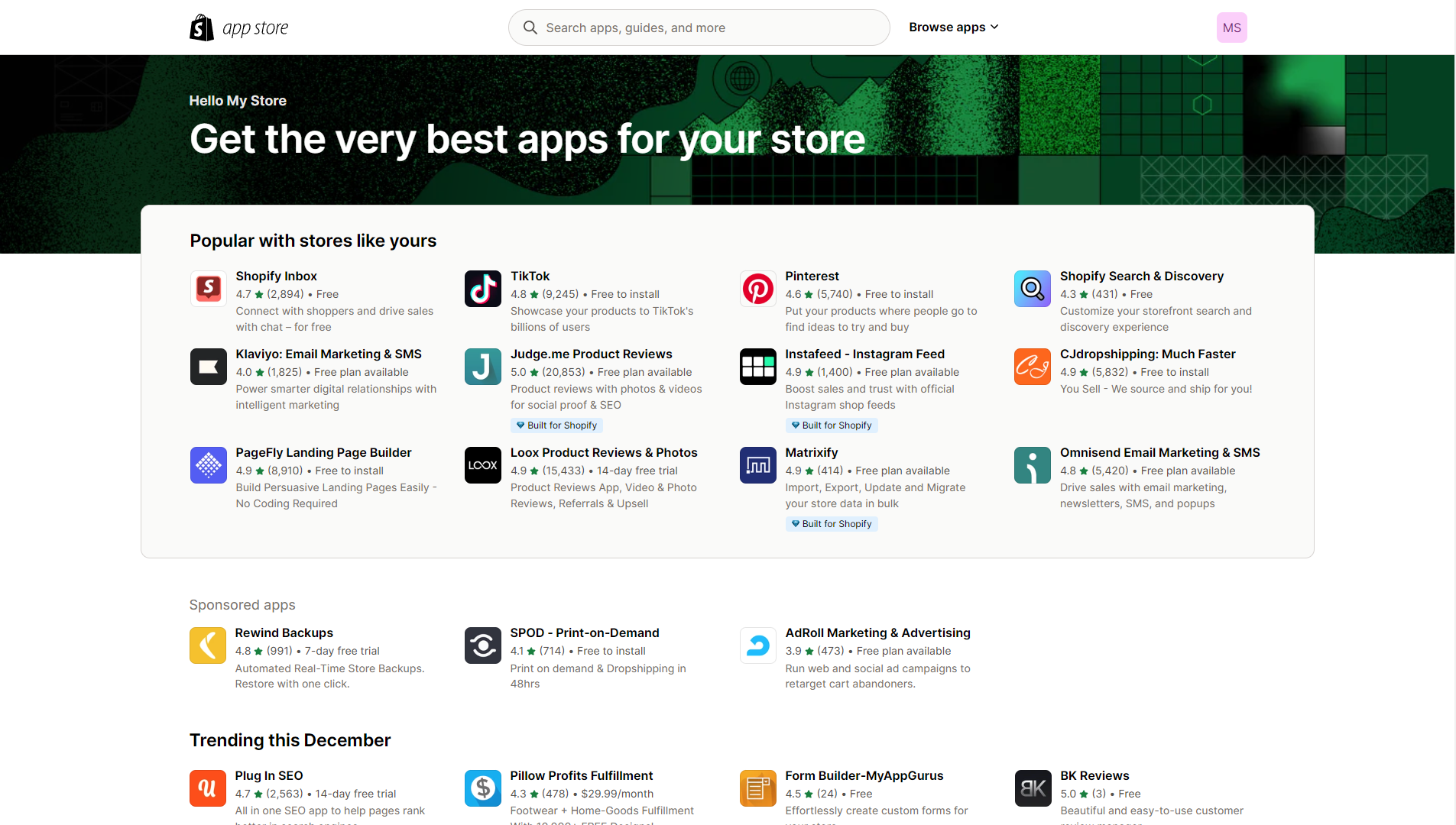
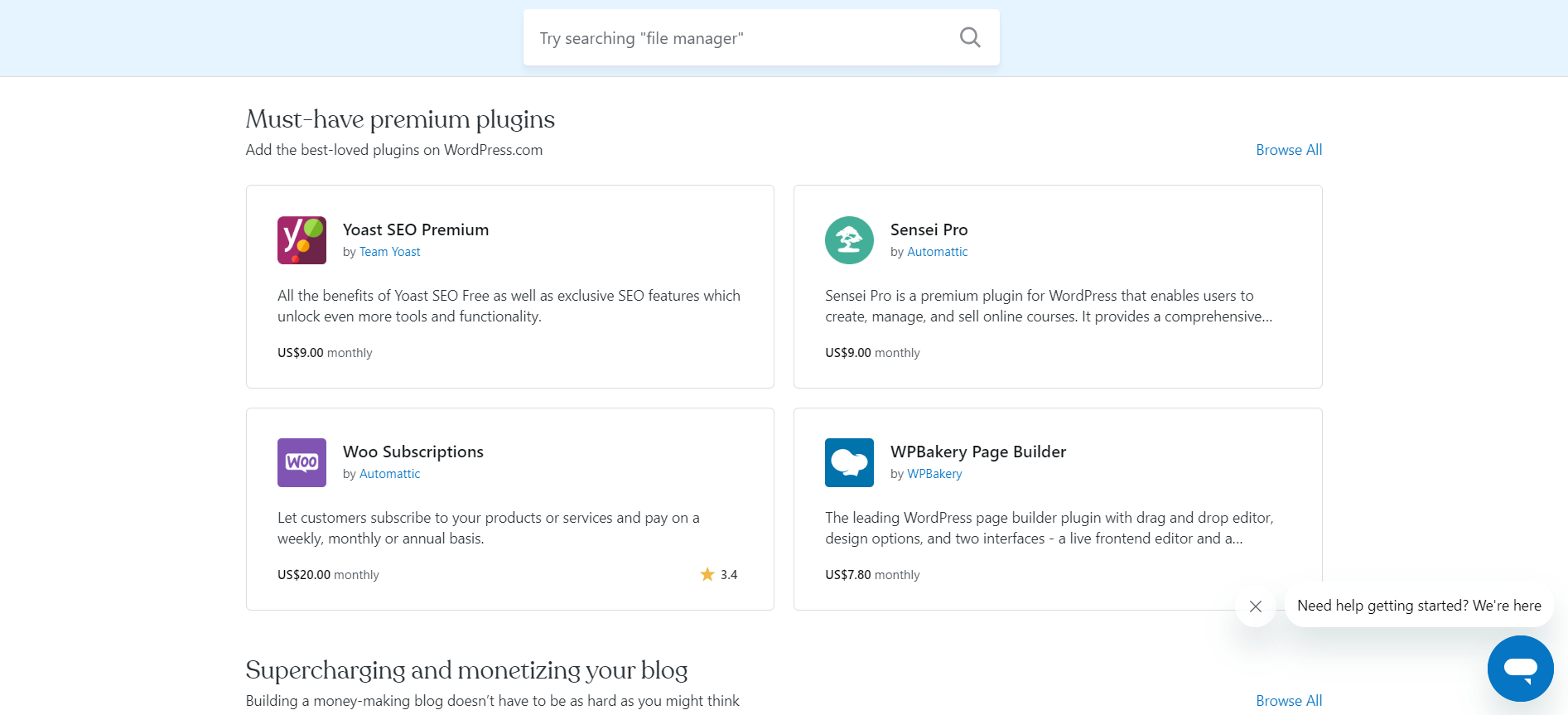
Marketing Features
Design FunctionalitiesRepresents how well each platform allows for creative design and customization of websites.Score Components:
- Template Variety (30%): Range and quality of design templates.
- Customization (30%): Flexibility and options for design alterations.
- User Interface (20%): Ease and intuitiveness of the design process.
- Responsiveness (10%): Adaptability to different devices and screen sizes.
- Innovation (10%): Unique design features and tools.
 8.8
8.8
 8.0
8.0
🏆
Overall Winner: Shopify
. Shopify stands out for its more advanced ecommerce-focused marketing tools, especially in analytics and ad campaign management. WordPress is strong in blogging and offers a wide range of plugins for marketing functionalities.
 |
 |
|
|---|---|---|
SEO Tools |
||
Email Marketing |
(via plugins) |
|
Blogging |
||
Social Media Integration |
Advanced integration for selling directly on social platforms |
Via plugins |
Analytics and Reporting |
Detailed analytics for in-depth insights |
Via plugins |
Ads and Promotions |
Google Ads integration; sophisticated ad campaign management |
Via plugins |
Customer Support
Customer supportEvaluates the quality and availability of support options.Score Components:
- Response time (40%): Speed of support responses.
- Support quality (30%): Effectiveness and helpfulness of the support.
- Availability (20%): Range of support channels (phone, chat, email).
- Resource richness (10%): Quality of self-help and educational materials.
 8.6
8.6
 5.0
5.0
🏆 Winner: Shopify
. When comparing Shopify vs WordPress, Shopify stands out with its robust customer support system. Shopify provides 24/7 support through chat, email, and phone, ensuring users can get help whenever they need it. The platform also offers clear tutorials, an extensive community forum, and a valuable marketing blog, making it easier for users to find solutions and grow their businesses.
WordPress, on the other hand, lacks direct customer support due to its open-source nature. Users must rely on community forums, the WordPress codex, and support from hosting providers or plugin and theme developers. While this decentralized support system can be effective, it often lacks the immediacy and comprehensiveness of Shopify’s dedicated support team.
Security
SecurityLooks at the platforms’ security measures and data protection.Score Components:
- Data protection (40%): Safeguards for user and customer data.
- SSL and encryption (30%): Implementation of secure connections.
- Compliance (20%): Adherence to industry security standards.
- Regular updates (10%): Frequency of security updates and patches.
 9.0
9.0
 6.7
6.7
🏆
Winner: Shopify
. Shopify’s security measures are comprehensive and robust, including secure infrastructure, encryption, two-factor authentication, regular audits, and a dedicated incident response team. These features ensure the safety of user data and the overall security of the website.
On the other hand, WordPress’s security largely depends on the hosting provider and the use of plugins. While WordPress provides numerous functionalities and resources to enhance website security effectively, the level of security can vary greatly depending on the hosting provider and the specific plugins used. Therefore, Shopify is the clear winner in this comparison.
AI Capabilities
AI capabilitiesMeasures the effectiveness of AI-driven features and tools.Score Components:
- Automation efficiency (40%): Impact of AI on streamlining processes.
- Personalization (30%): AI-driven customization for users or customers.
- AI-Assisted design (20%): Role of AI in website design and functionality.
- Data analysis (10%): Use of AI in interpreting user data and analytics.
 7.9
7.9
 6.1
6.1
 |
 |
|
|---|---|---|
Personalized Design |
Shopify AI Builder offers personalized design suggestions |
Wordpress relies on AI plugins like AI Site Builder and Zita |
SEO Optimization |
AI-driven recommendations for better search engine visibility |
AI plugins like Rank Math and Yoast SEO offer SEO analysis |
Customer Behavior Analysis |
Advanced analytics to understand customer preferences |
|
Sales Predictions |
AI-powered sales forecasting tools |
|
Inventory Management |
AI tools to assist in efficient inventory handling |
|
Content Generation |
Shopify’s AI features Content Assistant for content generation |
AI plugins like GetGenie and AI Power offer content generation |
🏆 Winner: Shopify
. Shopify, with a score of 7.9, utilizes AI mainly to enhance the ecommerce experience. Its AI features focus on customer behavior analysis, personalized shopping experiences, inventory management, and sales predictions. While Shopify’s AI is powerful, it is more business and data-centric compared to WordPress’s plugin-dependent AI.
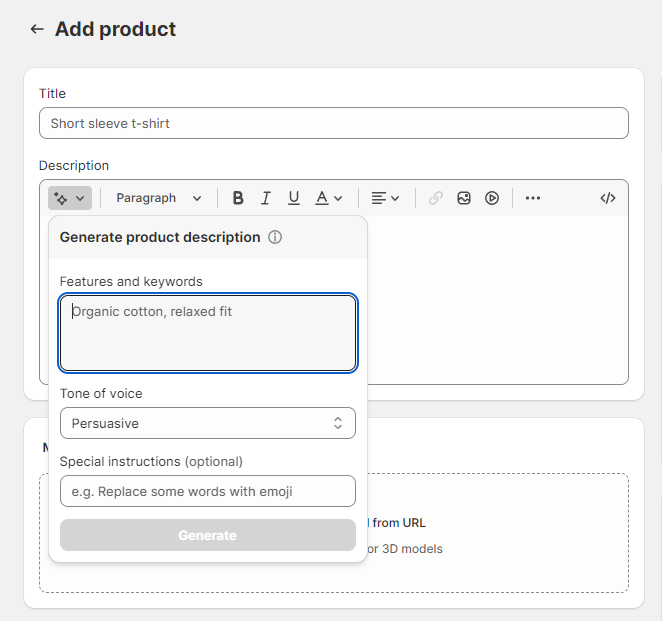
WordPress, with a score of 6.1, does not have a built-in AI builder. However, its open-source nature allows for integration with various AI plugins for website building, ecommerce, content generation, and additional AI features. This makes WordPress flexible but also requires more effort from the user to integrate and manage these plugins.
User Management
User ManagementAssesses the platforms’ capabilities in managing user roles, permissions, and accessibility.Score Components:
- Role Customization (40%): Flexibility in creating and defining user roles and
permissions. - Ease of Management (30%): User interface and tools for managing users.
- Access Control (20%): Effectiveness of access control measures for different user
levels. - Scalability (10%): Ability to manage a growing number of users efficiently.
 6.5
6.5
 8.8
8.8
🏆 Winner: WordPress
. Managing your online team with Shopify and WordPress involves different approaches to website editing access.
- Shopify enforces staff account limits based on plans, ranging from 2 to 15, with Shopify Plus offering unlimited
accounts. Collaborators with limited access are also an option. - The editing access for a WordPress.org website depends on user roles and additional controls. User roles, ranging from Super Admin to Subscriber, dictate the level of permissions, while plugins and controls such as role management plugins and revision control offer further customization for specific editing rights and collaboration.
Shopify User Roles and Access Levels:
| Role | Description | Access Highlights |
|---|---|---|
| Store Owner | Full control over store | Manage products, orders, discounts, payments, apps, settings. Create and manage staff accounts. |
| Staff | Configurable access by owner | Add/edit products, manage orders, fulfill orders, manage customers, update content. Access level can be customized by the owner. |
| Collaborator | Limited access for external partners | View and manage specific sections like blog or product categories. Cannot access full store settings. |
WordPress User Roles and Access Levels:
| Role | Description | Access Highlights |
|---|---|---|
| Super Admin | Manages the entire network in WordPress Multisite. | Network admin, manage sites, users, plugins, themes. |
| Administrator | Full access within a single site. | Manage plugins, themes, users, all posts/pages. |
| Editor | Manages and publishes content, including others’ posts. | Edit/publish all posts, manage comments, categories. |
| Author | Publishes and manages their own posts. | Write, edit, publish own posts, upload files. |
| Contributor | Writes and edits their own posts but cannot publish. | Write, edit own posts (no file uploads or publishing). |
Additional Features
 |
 |
|
|---|---|---|
SSL Certificate |
||
Custom Domain |
||
Free Custom Domain Included |
||
International Domains |
||
Mobile Responsive |
||
Page Speed |
||
Website Builder Mobile App |
||
Convert a Website To An App |
||
Website Analytics |
||
Multilingual Sites |
||
Multiple Users |
Shopify vs WordPress: User Feedback
Shopify’s slightly higher rating on G2 Crowd can be largely attributed to its specialization in ecommerce. Its comprehensive features, ease of use, and robust customer support cater specifically to online businesses, leading to high user satisfaction among those seeking a dedicated ecommerce solution.
WordPress receives praise for its user-friendliness, cost-effectiveness, extensive themes and plugins, customization options, and supportive community. However, users mention technical challenges, security concerns, a learning curve, and a lack of direct support. Overall, it remains a widely used and versatile platform, especially beneficial for startups and small businesses.
The making of this blog
We followed a clear, step-by-step process to write and research this article.
Shopify vs WordPress: FAQ
Which platform is better for ecommerce, Shopify or WordPress?
Can I use Shopify or WordPress for a blog or informational website?
How do Shopify and WordPress compare in terms of design and customization?
Which platform is easier to use for beginners?
How do the costs of using Shopify and WordPress compare?
Which platform offers better customer support?
Are Shopify and WordPress secure platforms for building a website?









